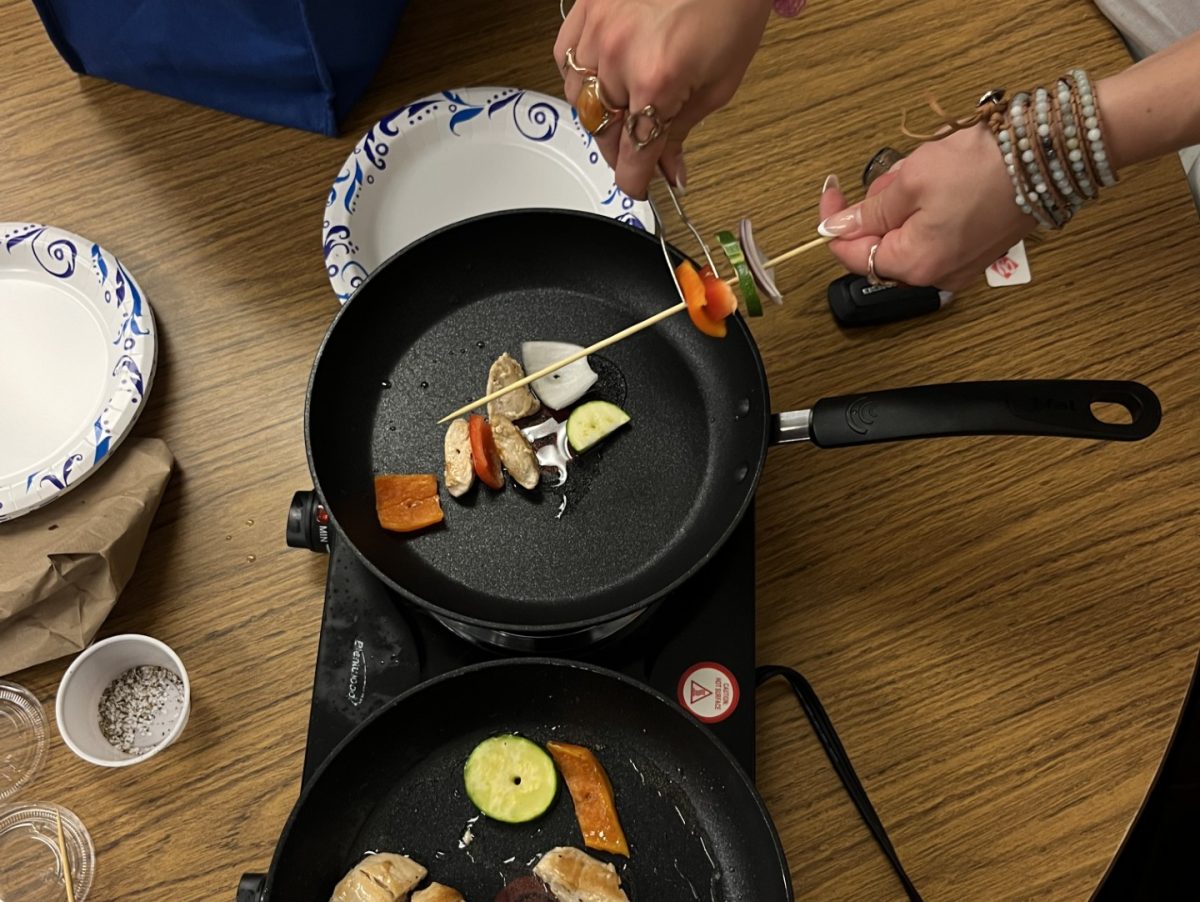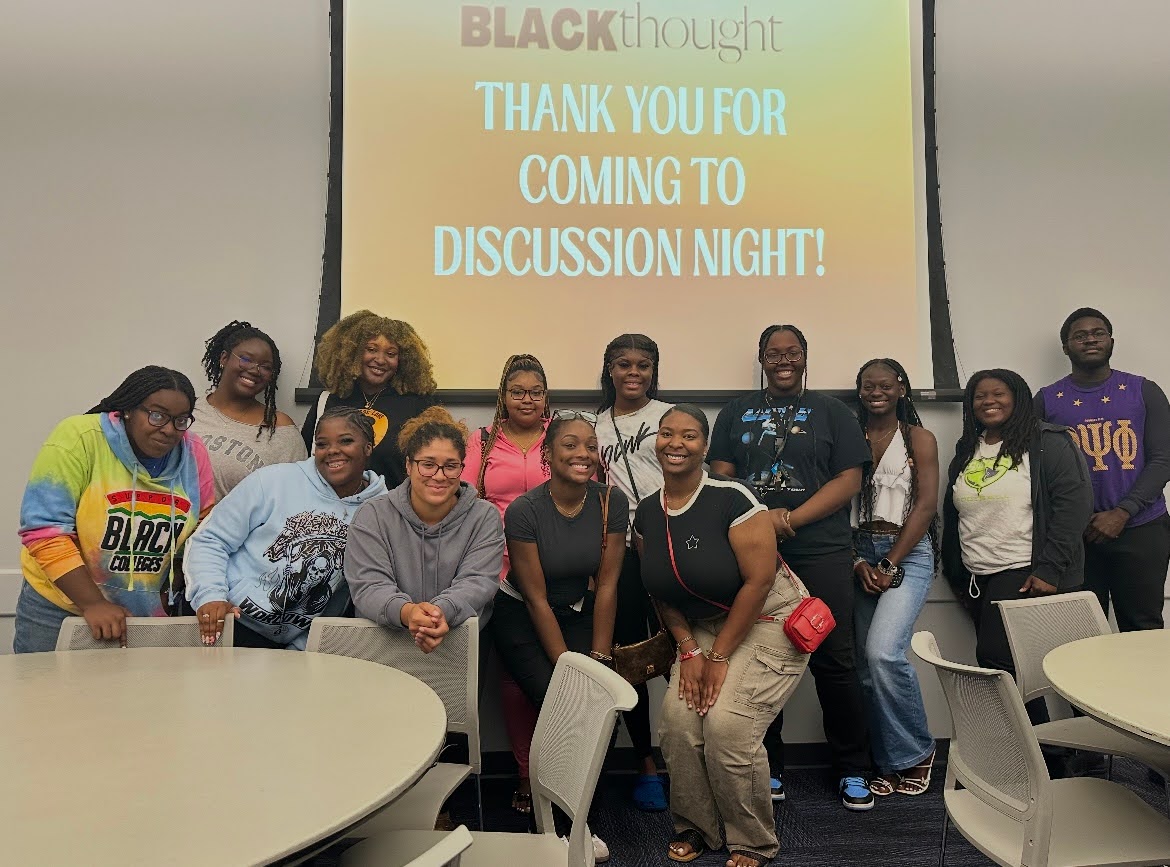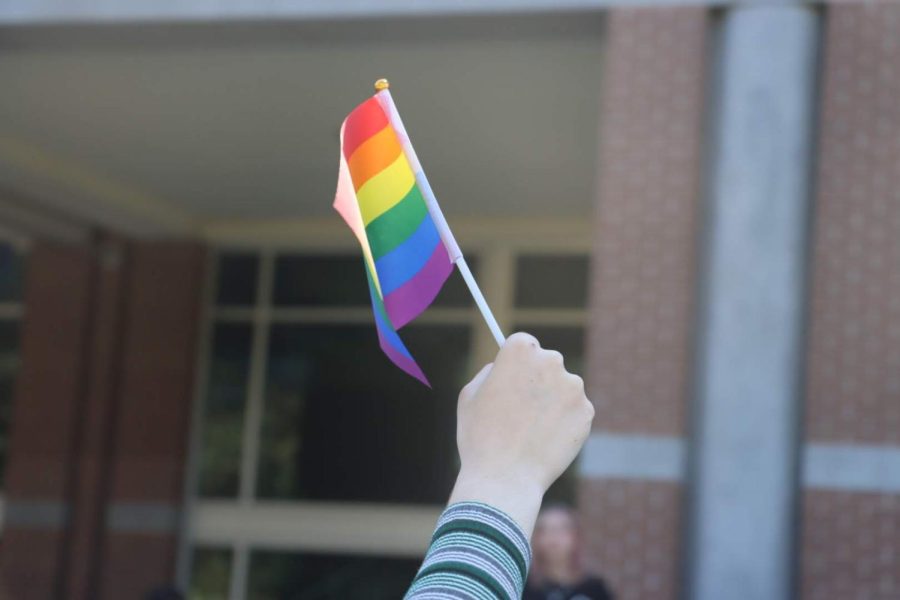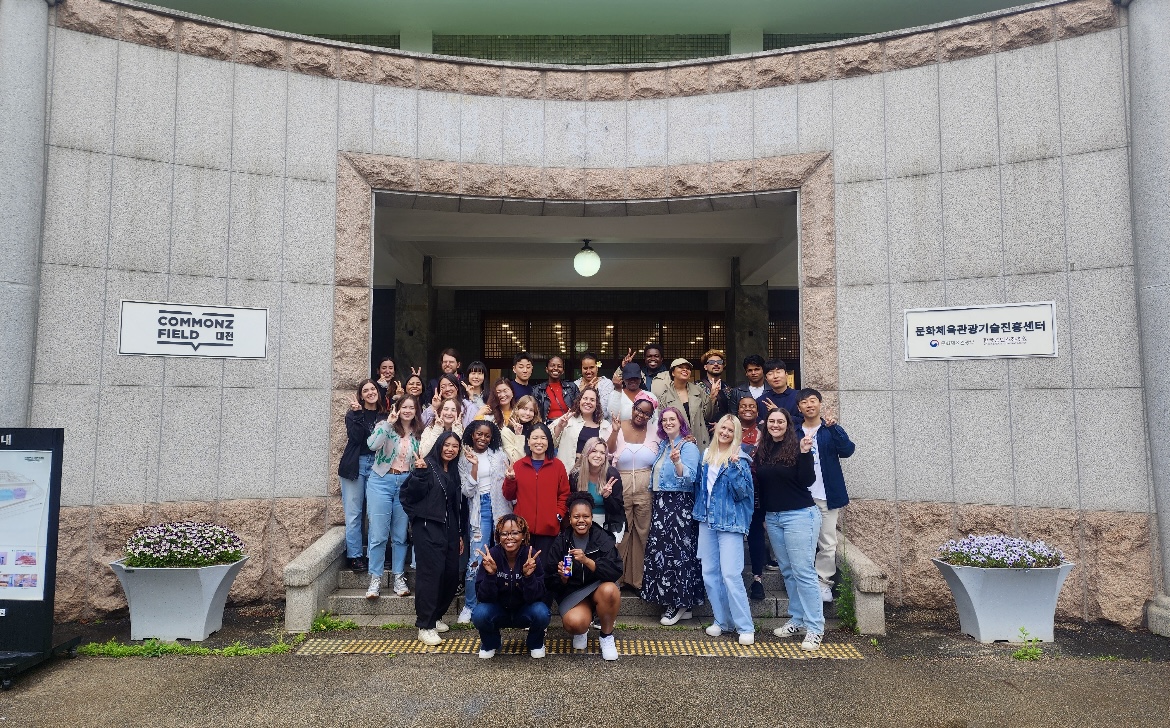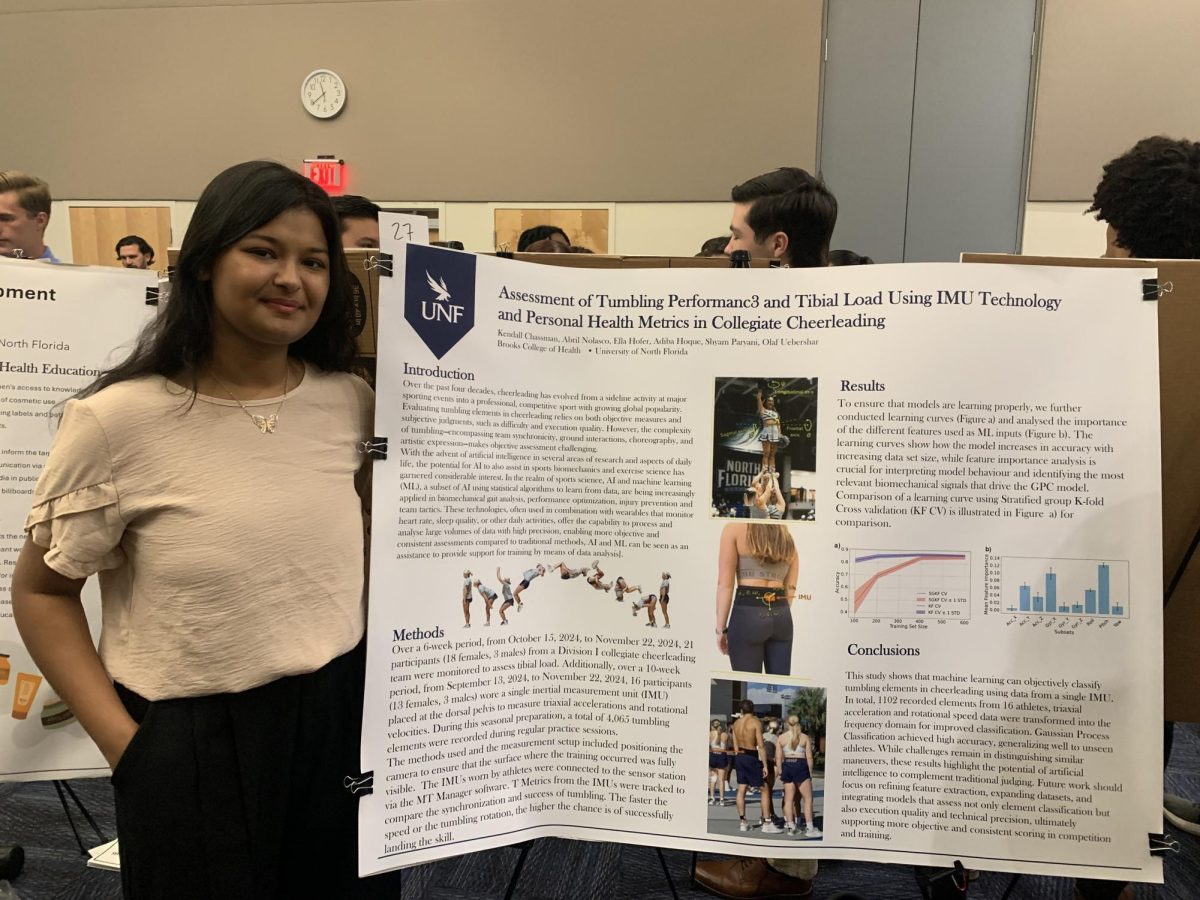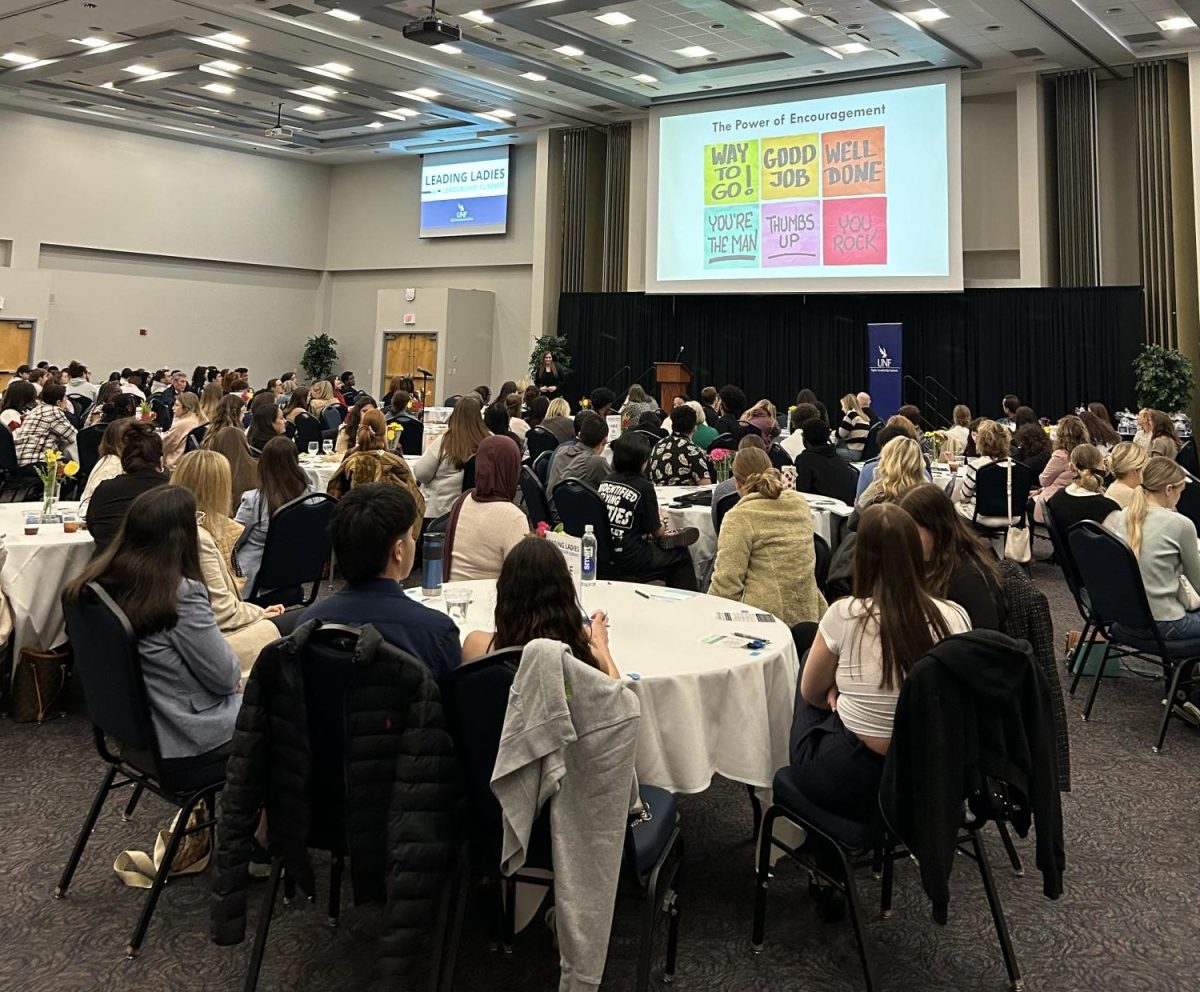
Photo by Zach Shoenhide
“This is so we get all the air bubbles out,” Browning said.
One by one, he slaps the bologna-shaped wedges of wet clay into a pile. He kneads the fused mass into individual mounds and knocks them around with a cadence until the air pockets are gone. They are ready for the wheel.
It’s from these malleable, nearly formless beginnings that students in the ceramics classes of professors Stephen Heywood and Trevor Dunn learn to make bowls and, in addition, bring hope to hungry families through a special project they participate in each fall.
The project is for Empty Bowls, an event hosted by North Florida’s Second Harvest Food Bank. After paying for event entry, guests receive a light lunch, usually soup, and are given an unfilled bowl to remind them of the bowls that go unfilled every night.
Proceeds from the event benefit Second Harvest and food banks in the area. According to Second Harvest, one in six adults in America do not know where their next meal will come from. For children the ratio is one in four. Second Harvest is a food distributer — an organization that gets the donated food where it needs to go. They serve about 340,000 individuals in the Northeast Florida distribution area.
Second Harvest has been using Empty Bowls to raise awareness for hunger in Northeast Florida for 29 years. The event, sponsored by companies like Bank of America and Wells Fargo, will have about 1,400 attendees.
Since each guest receives a bowl, this creates a demand every fall for the donated ceramics in Northeast Florida. Some bowls are put up for sale and others are put up for auction. Heywood decided this would provide an excellent opportunity for what the university calls community-based transformational learning — classroom experiences that benefit local communities.
Once the bowls are thrown and shaped on the wheel, they are allowed to dry before they are trimmed.
Heywood set the goal for his students to make at least ten bowls to be graded, though students may make more. Students can keep the bowls they like, but many donate them all.
Alyssa Wagner, a UNF ceramics senior, said this is her first time making bowls for the project. “I’ve made around 15 bowls just for Empty Bowls, and I’m going to donate all of those.”
Bowls are fired in kilns, where the shaped now dry clay undergoes chemical changes where color shifts and clay hardens. It happens in two stages, once without glaze, then again with.
Heywood estimates each class makes about 100 bowls. Including the bowls made by Dunn, Heywood, both classes and the Potters’ Guild, UNF donates almost 500 bowls to the event.
The event receives bowls made by students of nearly all grade levels throughout the region, from first graders to students at universities. Since many of the bowls donated by UNF are well-made, some go up for auction, which, according to Heywood, has generated thousands of dollars for the project.
“A lot of my students were shocked that someone would want to buy their bowl, maybe they didn’t think it was good as it really was, and they were well pleased, I think, to see that people wanted to buy their pieces,” he said. “And that got them excited about their own skill, their own abilities and their own pieces.”
The event will be held in the Prime Osborn Convention Center on November 19. Individual tickets are $30. All proceeds go to Florida Second Harvest, local food banks and charity.
Email Jason Howard at reporter3@unfspinnaker.com.




